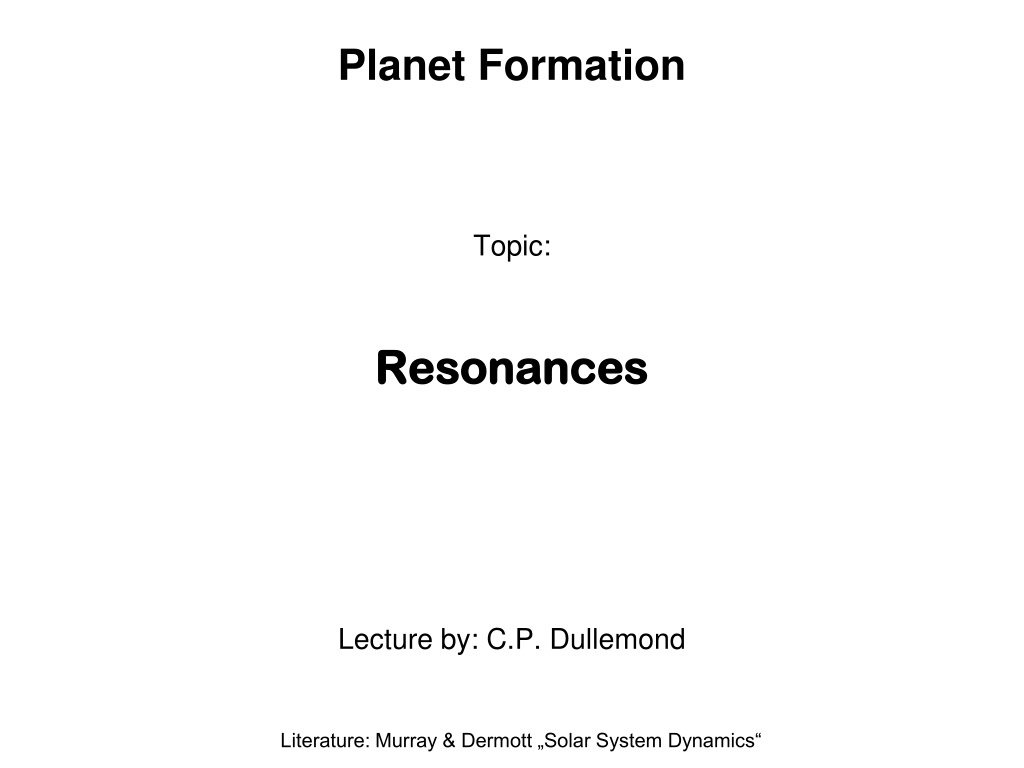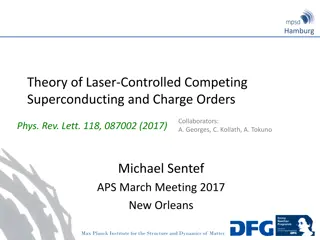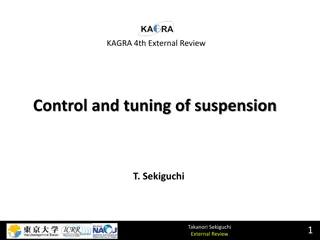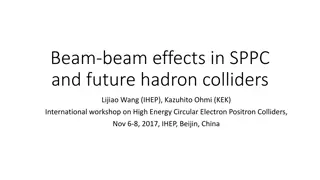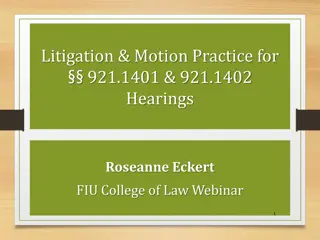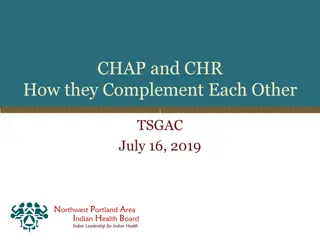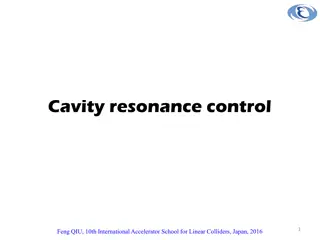Resonances in Planet Formation
Resonances play a crucial role in planetary systems, where characteristic frequencies align to produce dynamical consequences. Mean motion resonances, spin-orbit resonances, and secular resonances are key examples influencing planetary dynamics. Explore resonant angles, resonant arguments, and examples like Pluto's 3:2 mean motion resonance with Neptune to grasp the significance of resonances in celestial mechanics.
Download Presentation

Please find below an Image/Link to download the presentation.
The content on the website is provided AS IS for your information and personal use only. It may not be sold, licensed, or shared on other websites without obtaining consent from the author. Download presentation by click this link. If you encounter any issues during the download, it is possible that the publisher has removed the file from their server.
E N D
Presentation Transcript
Planet Formation Topic: Resonances Resonances Lecture by: C.P. Dullemond Literature: Murray & Dermott Solar System Dynamics
What is a resonance? A resonance is when two characteristic frequencies of a system match up Typically such a match-up (and even an almost- match-up) has dynamical consequences (causing instability in an otherwise stable system or stability in an otherwise unstable system) In planetary systems numerous possible resonances are possible: Mean motion resonances Spin-orbit resonances Secular resonances ...
Mean motion resonances Example: Pluto is in 3:2 mean motion resonance with Neptune. Every 3 orbits of Neptune around the Sun, Pluto completes 2 orbits.
Resonant angle 1(t) and 2(t) are the true anomalies of the planets 1 and 2. For circular orbits they are simply: 1(t)= 1t and 2(t)= 2t. For non- circular orbits they are of course non-linear with time. 2(t) 1(t) Define now an angle p,q(t) as follows: qp,q(t)=(p+q)l2(t)- pl1(t) This is called the resonant angle, or resonant argument. If there exists two natural numbers p and q for which the function p,q(t) remains bound within a range of 2 for all time t, then the two planets are said to be in (p+q):p mean motion resonance.
Simple example: q=0, 1=2 To get a better feel for the concept of resonant angle, let us have a look at special cases. Let us look at the angles for which q=0: qp,0(t)= p l2(t)-l1(t) [ This is the easiest to visualize: It is simply p times the angle between the two position vectors of the planets. ] Now let us assume that planets 1 and 2 are on exactly the same circulat orbit, so that they have exactly the same orbital frequency. But let them start with a different true anomaly, or in other words: start with an angle . qp,0(t)= p Wt+a-Wt [ So the resonant angle is constant. These two planets are in 1:1 resonance. ]= pa
Simple example: q=0, 1 2 Now consider the case where planet 1 is slightly inward of planet 2 (both still on circular orbits). In this case the planets slowly approach each other. When they come close, they gravitationally fly by each other, putting each other on different orbits. This is very similar to the horseshow libration we ve seen before. Typically these two new orbits are still very close, and the planets will eventually encounter each other again, and the story will repeat itself. In a corotating frame with average rotation frequency it will then look something like this: This is in fact exactly what happens with the moons Epimetheus and Janus of Saturn. p,q(t) = mm resonance 2 0 time After Murray & Dermott
Simple example: q=0, 1 2 In other words: the gravitational interaction between the two planets (or moons in the case of Epimetheus and Janus) can cause the angle p,q(t) (in this case 1,0(t)) to bounce between two limits. Without the gravitational forces, if 1 2we would get instead: 4 Not bound, so no resonance. p,q(t) 2 0 time Without gravitational forces, we only get a 1:1 resonance if 1=== 2. This is never exactly the case! So gravity plays a key role in resonances.
Resonance width & Libration For circular orbits, the width of a resonance is the maximum difference in semi-major axis (or in other words, maximum difference in 1and 2) for which the gravitational forces between the two planets or moons can still keep them in resonance (i.e. keep the function p,q(t) bound). In multi-body problems this means that resonances can in fact overlap. For massless particles the width is 0. The larger the mass of the planets compared to the star (or moons compared to the planet) the larger the width of their resonance. The oscillating motion of the resonant angle p,q(t) is called libration. For the case of small amplitude libration, the angle p,q(t) obeys a pendulum equation, which for very small amplitudes is like a harmonic oscillator: d2qp,q(t) dt2 2sin qp,q(t) ( ) =-w0
Location of p,q-resonances Locations of the p,q-resonances: p=1,2,3,4 q=0,1,2,3,4,5
Special case: Lindblad resonances (q=1) Locations of the p,1-resonances: p=1,2,....,10 q=1
Special case: Lindblad resonances (q=1) Lindblad resonances play an important role if a planet is in resonance with a gas flow. Remember this movie from earlier in the lecture? If the yellow test particle is a fluid element of a protoplanetary disk, then if it is in p+1:p (=Lindblad) resonance with the planet, it will hop right onto the planet and get a next kick. If not, it will hop over the planet and not get a kick. Gas that is on a Lindblad resonance will thus get strongly perturbed: This is another way to explain the spiral waves causing planet migration. Hence the name Lindblad torque . Since gas is a fluid (and not a collisionless system of particles), the q 1 resonances cannot play a role for gas disks. Only Lindblad.
Pros and cons of resonances Resonances can pump eccentricity efficiently. This can lead to: Dynamic heating of planetesimals by an embryo Planet migration in the case of Lindblad resonances in a gas disk Instabilities in a multi-planetary system Resonances can also: Lock two planets to each other, preventing instabilities Modify the nature of planetary migration in disks
Nice Model of Late Heavy Bombardment t=100 Myr t=879 Myr Jupiter and Saturn slowly migrate toward their mutual 2:1 mean motion resonance due to interactions with the planetesimals. Once they get in reso- nance, they rapidly shake up the entire outer solar system, sending many comets to Earth: The Late Heavy Bombardment that caused the craters on the Moon. t=882 Myr t=1100 Myr Nice stands for the city in France where model was designed. Gomes, Levison, Tsiganis, Morbidelli (2005)
Migration as a way to push planets into resonance If planets are not in resonance, it is not easy to put them into resonance (in a perfect 3 body problem it is not even possible). But if the system is embedded in a protoplanetary disk, then each planet migrates at it s own pace. This can lead two planets to move toward each other s orbit. They can then get locked in resonance Once they are locked, they migrate together, and this two-planet migration behaves very differently from one-planet migration.
Pushing planets into resonance G. Bryden
Outward migration of a locked pair Masset & Snellgrove 2001
Grand Tack Scenario The Grand Tack model of Walsch et al employs this pairwise outward migration to allow Jupiter to migrate inward for a while and then get saved before plunging into the Sun by being resonantly captured by Saturn. The pair then migrates outward again. This might explain the emptiness of the asteroid belt. Walsch, Morbidelli, Raymond, O Brien, Mandell (2011)
